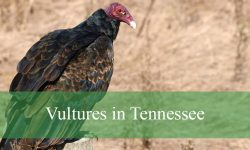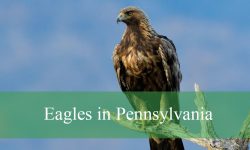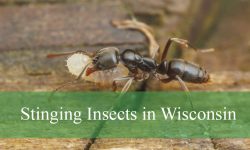Below is a list of 22 blackbird species commonly found in the state of Arizona. This list includes birds from the blackbird family (Icteridae) as well as some closely related species or those often collectively referred to as blackbirds in this region.
These fascinating birds vary widely in appearance, behavior, and habitat, making Arizona a great place to observe a diverse array of blackbird species throughout the year.
Common Blackbirds Found in Arizona
Red-winged Blackbird (Agelaius phoeniceus)
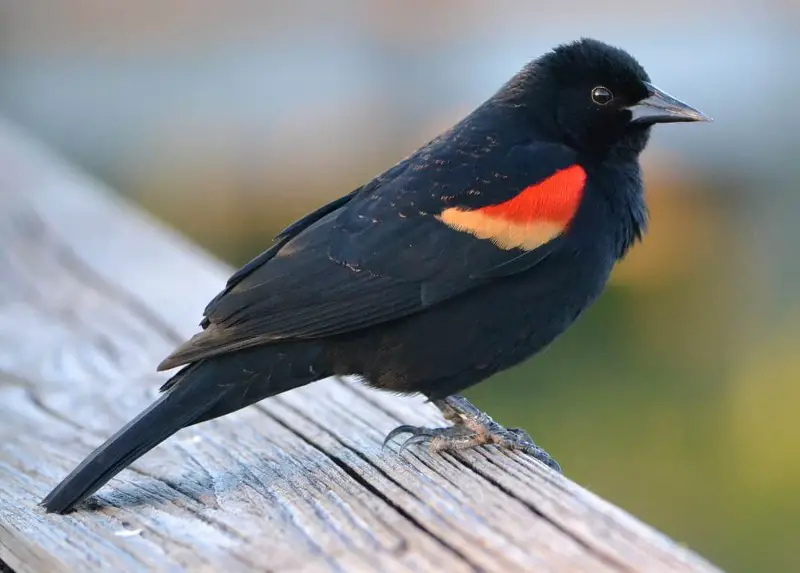
The Red-winged Blackbird is one of the most recognizable and widespread blackbirds across North America, including Arizona. Males are striking with glossy black plumage contrasted by vivid red and yellow shoulder patches, or epaulets, which they display prominently during territorial or mating displays. Females, on the other hand, are mottled brown and heavily streaked, resembling large sparrows, which helps them stay camouflaged in dense marsh vegetation where they often nest. This sexual dimorphism makes identification relatively straightforward during the breeding season.
Adult males measure approximately 7.5 to 10 inches (19 to 25 cm) in length with a wingspan reaching around 12 to 16 inches (30 to 40 cm). They weigh about 2.4 to 3.5 ounces (70 to 100 grams). Their sharp, pointed bill is ideal for their omnivorous diet consisting mainly of seeds, insects, and occasionally small amphibians. Red-winged Blackbirds are known for their loud, distinctive calls and songs, often heard echoing over wetlands and open fields. Males aggressively defend their breeding territories by perching conspicuously on reeds, cattails, or fence posts, flashing their red shoulder patches as a warning to rivals.
In Arizona, these birds are commonly found in marshes, wet meadows, and riparian habitats along rivers and lakes, especially during the breeding season. They prefer freshwater wetlands with dense emergent vegetation where they build their nests low among reeds. Outside the breeding season, Red-winged Blackbirds may form large flocks in agricultural fields, feeding on leftover grains and seeds. Their adaptability allows them to thrive in various habitats, from lowland valleys to irrigated farmland, making them one of the most abundant blackbird species observed in Arizona.
Brewer’s Blackbird (Euphagus cyanocephalus)
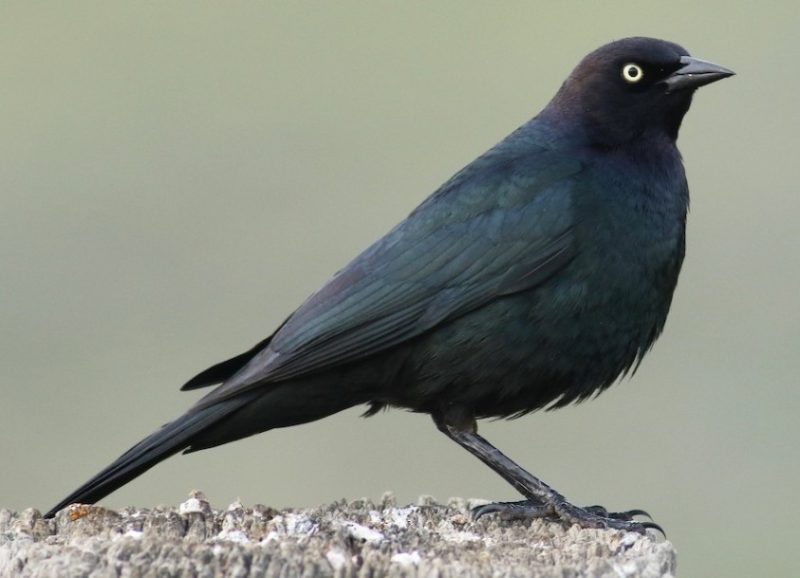
Brewer’s Blackbird is a medium-sized blackbird species common throughout the western United States, including Arizona. Adult males appear glossy black with subtle iridescent purple and green hues, especially noticeable in bright sunlight. Females, in contrast, have a more muted grayish-brown plumage with paler underparts. Both sexes have striking pale yellow eyes, which are a distinctive field mark when identifying this species. The Brewer’s Blackbird’s slender, pointed bill is well suited for their omnivorous feeding habits.
Typically measuring about 9 to 11 inches (23 to 28 cm) in length, Brewer’s Blackbirds weigh around 2.7 to 3.5 ounces (75 to 100 grams). They have a relatively long tail and a slender profile compared to other blackbirds. Behaviorally, Brewer’s Blackbirds are social birds often seen in flocks that can number in the hundreds, especially outside the breeding season. They are adaptable and opportunistic feeders, consuming a wide variety of insects, seeds, and human food scraps. Their vocalizations are varied, including harsh chatter and metallic calls.
In Arizona, Brewer’s Blackbirds are widespread and frequent open habitats such as grasslands, agricultural fields, urban parks, and even suburban backyards. They often forage on the ground, scratching through leaf litter or short grass to uncover insects. During breeding, they nest in colonies or loose groups, building cup-shaped nests in trees, shrubs, or on man-made structures. Their ability to thrive in both natural and human-altered landscapes makes them a common sight year-round across the state.
Rusty Blackbird (Euphagus carolinus)
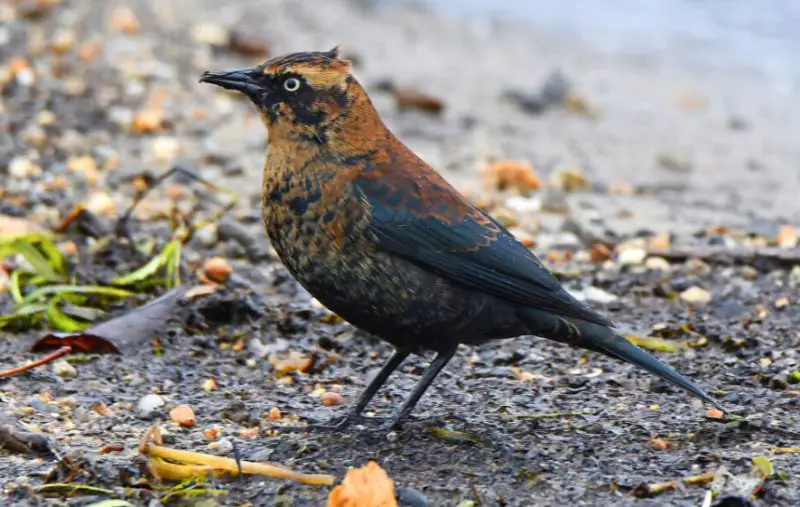
The Rusty Blackbird is a less commonly seen blackbird species in Arizona, mainly observed during migration or in winter. Its name derives from the rusty, brownish edges on the feathers of breeding adults, which give the bird a somewhat worn or “rusty” appearance compared to the shiny black of other blackbirds. Males during breeding season display glossy black plumage with greenish iridescence, while females are duller with grayish-brown tones. The rusty edging is especially noticeable in non-breeding or migrating birds.
Rusty Blackbirds are medium-sized, around 9 to 10 inches (23 to 26 cm) long with a wingspan of approximately 13 inches (33 cm), weighing about 2.7 to 3.2 ounces (75 to 90 grams). They have a straight, pointed bill and relatively long legs, well adapted for foraging in wet, muddy environments. These birds primarily feed on aquatic insects, larvae, seeds, and occasionally small crustaceans, probing into shallow water or leaf litter.
In Arizona, Rusty Blackbirds are most often found during their migration through wet woodlands, riparian zones, and marshy areas. They prefer habitats with abundant water and dense vegetation, which provide both food and shelter. Due to their secretive nature and declining population, Rusty Blackbirds are less commonly observed compared to other blackbird species. Conservation concerns exist due to habitat loss and changes in wetland ecosystems, making their occasional sightings in Arizona notable for bird watchers.
Common Grackle (Quiscalus quiscula)
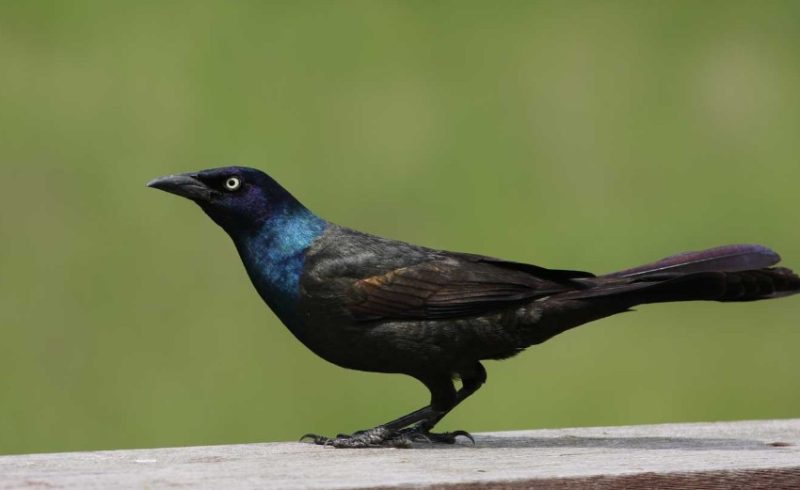
The Common Grackle is a large, glossy blackbird native to much of North America and a regular visitor in Arizona, especially during migration and winter. Males exhibit iridescent black plumage with shades of blue, green, and purple visible in sunlight, while females tend to be slightly duller and browner. One of their most distinguishing features is their long, keel-shaped tail and bright yellow eyes, which stand out against their dark feathers. Their strong, thick bill aids in their omnivorous diet.
Measuring about 11 to 13 inches (28 to 33 cm) in length and weighing around 3.5 to 5.6 ounces (100 to 160 grams), the Common Grackle is noticeably larger than many other blackbird species. They are highly adaptable and known for their loud, harsh calls as well as a variety of whistles and chatters. Their behavior includes forming large flocks that often forage on the ground or in shallow water, consuming insects, small fish, seeds, and even human food waste. They are also known for their intelligence and problem-solving abilities.
In Arizona, Common Grackles inhabit open woodlands, agricultural fields, urban parks, and suburban areas. They are especially drawn to riparian corridors and water sources. These birds often nest in loose colonies in trees or shrubs near water. During winter months, they may form large flocks mixed with other blackbirds, creating impressive and noisy gatherings. Their adaptability to different environments and diets has enabled them to persist despite habitat changes across their range.
Great-tailed Grackle (Quiscalus mexicanus)
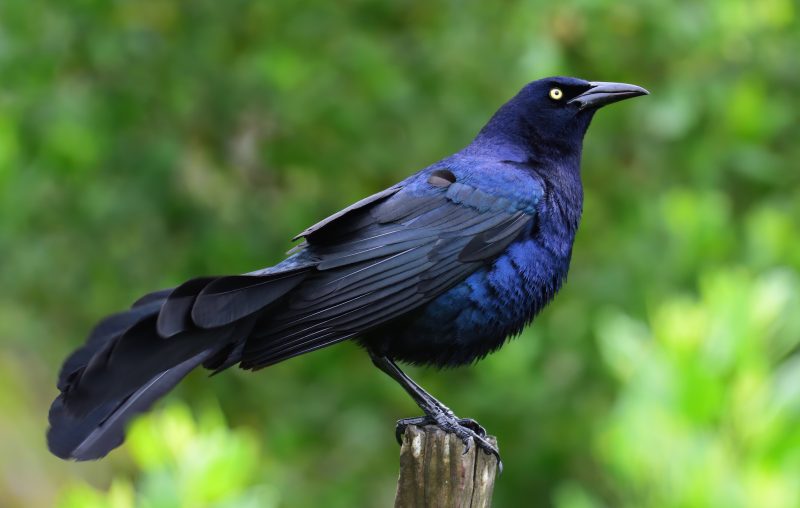
The Great-tailed Grackle is a striking and charismatic blackbird species that has expanded its range northward into Arizona over recent decades. Males are large and glossy black with iridescent purple and blue hues, featuring a very long, V-shaped tail that is one of their most distinctive characteristics. Females are smaller and more brownish with lighter underparts. Both sexes have bright yellow eyes that provide a sharp contrast to their dark plumage, making them relatively easy to identify.
Great-tailed Grackles measure between 13 to 18 inches (33 to 46 cm) long, with males being significantly larger than females. They weigh approximately 4.2 to 7.7 ounces (120 to 220 grams), making them among the largest blackbirds in Arizona. Behaviorally, these birds are highly social, often forming large, noisy flocks in urban areas, agricultural fields, and wetlands. Their loud, varied vocalizations include whistles, gurgles, and harsh croaks. They are omnivorous opportunists feeding on insects, small vertebrates, seeds, and human scraps.
In Arizona, Great-tailed Grackles have become common especially near water bodies such as lakes, rivers, and irrigation canals, as well as urban centers. Their adaptability to human-altered habitats has contributed to their success. They nest in trees, shrubs, and even on buildings, often forming loose colonies. Their boldness and gregarious nature make them highly visible and a favorite among bird watchers. Their expansion northward into Arizona is a fascinating example of range shifts linked to environmental changes and human influence.
Yellow-headed Blackbird (Xanthocephalus xanthocephalus)
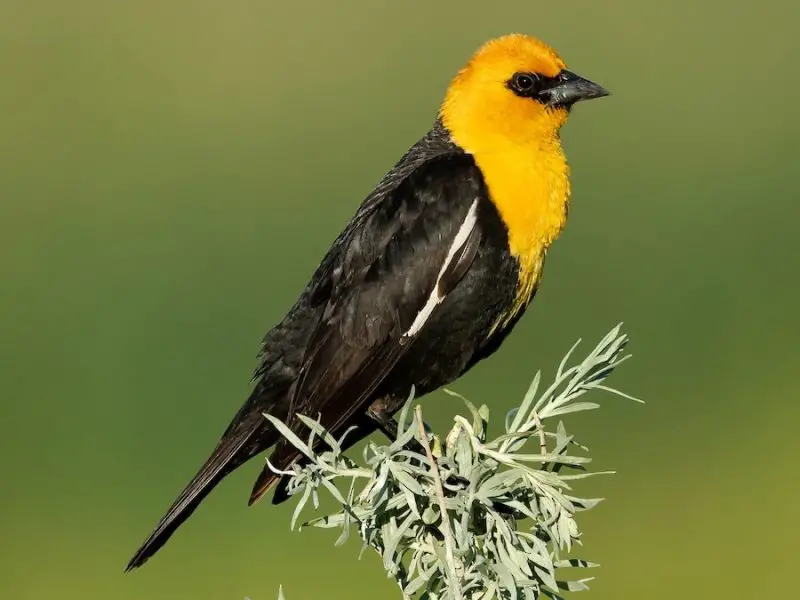
The Yellow-headed Blackbird is a visually striking species easily recognizable by the bright yellow head and chest contrasting sharply with its mostly black body. Males exhibit this bold coloration prominently during breeding season, while females and juveniles are duller with more muted yellow and brownish tones. Their thick, conical bill and somewhat chunky body shape help distinguish them from other blackbirds. Their striking appearance and unique coloring make them a favorite among bird watchers in Arizona during the breeding months.
Adults typically measure around 9 to 11 inches (23 to 28 cm) long, with a wingspan of about 14 inches (35 cm). Males weigh roughly 3.5 to 4.2 ounces (100 to 120 grams), slightly heavier than females. Behaviorally, Yellow-headed Blackbirds are known for their loud, harsh calls and bubbly songs that echo over marshes and wetlands. They are highly territorial during breeding, often nesting in dense cattail marshes and reed beds, where they build cup-shaped nests anchored to sturdy vegetation.
In Arizona, Yellow-headed Blackbirds are most commonly found in wetland habitats such as marshes, irrigation ditches, and flooded fields during the breeding season, primarily in the northern and central parts of the state. They feed mainly on insects and seeds, foraging on the ground or in shallow water. Outside the breeding season, they sometimes form large flocks with other blackbird species in agricultural areas, taking advantage of leftover grains. Their presence is a good indicator of healthy wetland ecosystems in the region.
Brown-headed Cowbird (Molothrus ater)
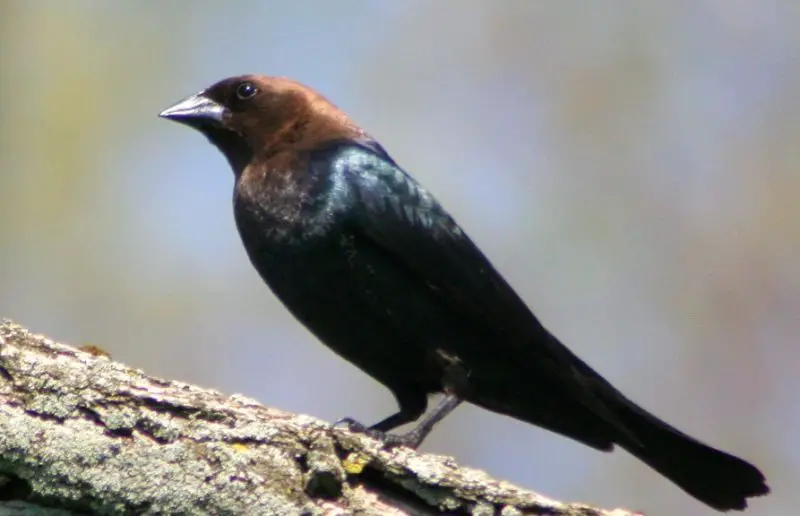
The Brown-headed Cowbird is a fascinating blackbird species known for its unique reproductive strategy as a brood parasite—laying eggs in the nests of other bird species and leaving the foster parents to raise their young. Adult males display glossy black bodies with rich brown heads, while females are more uniformly brownish-gray and less conspicuous. Their relatively short tails and thick, slightly curved bills help with their ground foraging lifestyle. Despite their parasitic behavior, Brown-headed Cowbirds are common and widespread across Arizona.
Measuring about 7.5 to 8.7 inches (19 to 22 cm) in length and weighing roughly 1.7 to 2.4 ounces (48 to 68 grams), these birds are smaller than many other blackbird species. Their behavior often involves following grazing mammals or farm machinery to catch disturbed insects and seeds. Brown-headed Cowbirds are social birds, often seen in flocks during non-breeding months. Their harsh, high-pitched calls and chattering vocalizations are distinctive and can be heard in many open habitats throughout the state.
In Arizona, Brown-headed Cowbirds thrive in open and semi-open habitats including grasslands, agricultural fields, and suburban areas. They are particularly abundant where livestock are present since they have evolved to follow cattle and horses for food. Their brood parasitism impacts many songbird populations, making them a species of interest for ornithologists studying avian ecology. Despite this, they are well adapted to Arizona’s diverse environments and are commonly observed year-round.
Bronzed Cowbird (Molothrus aeneus)
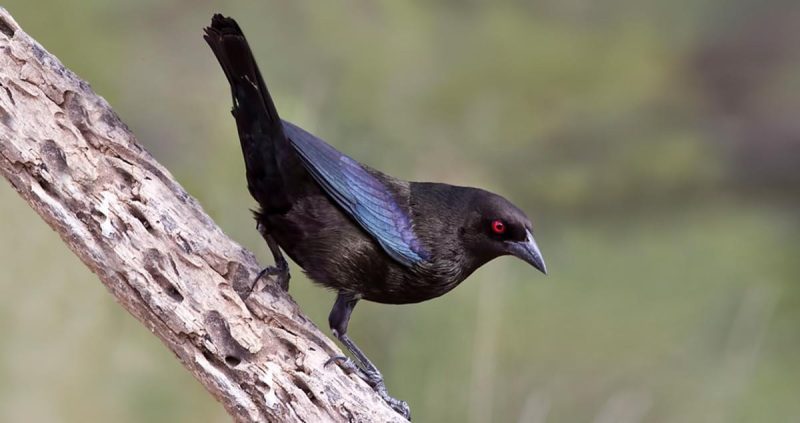
The Bronzed Cowbird is closely related to the Brown-headed Cowbird but can be distinguished by its slightly smaller size and metallic, bronzy-black plumage in males, with a more subdued brown head compared to its cousin. Females are grayish-brown and less flashy. This species shares the brood parasitic behavior characteristic of cowbirds, laying eggs in the nests of other birds and relying on them for raising their chicks. The Bronzed Cowbird’s striking iridescence gives it a distinctive appearance in the field.
Typically, Bronzed Cowbirds measure around 7.5 to 8.5 inches (19 to 22 cm) long and weigh between 1.5 to 2.4 ounces (44 to 68 grams). Their feeding habits and behavior are similar to those of the Brown-headed Cowbird; they forage primarily on the ground for insects and seeds, often near grazing animals. Their vocalizations include harsh chattering and nasal calls, which contribute to their identification during birding in Arizona’s southern and southeastern regions.
In Arizona, Bronzed Cowbirds are mostly found in the southern deserts and riparian zones, overlapping with but generally less widespread than Brown-headed Cowbirds. Their presence is more common near agricultural lands and water sources. Although less abundant than Brown-headed Cowbirds, Bronzed Cowbirds share similar brood parasitism impacts on native songbird species. Their specialized habitat preferences and range make them an interesting species for birders focused on southwestern avifauna.
Boat-tailed Grackle (Quiscalus major)
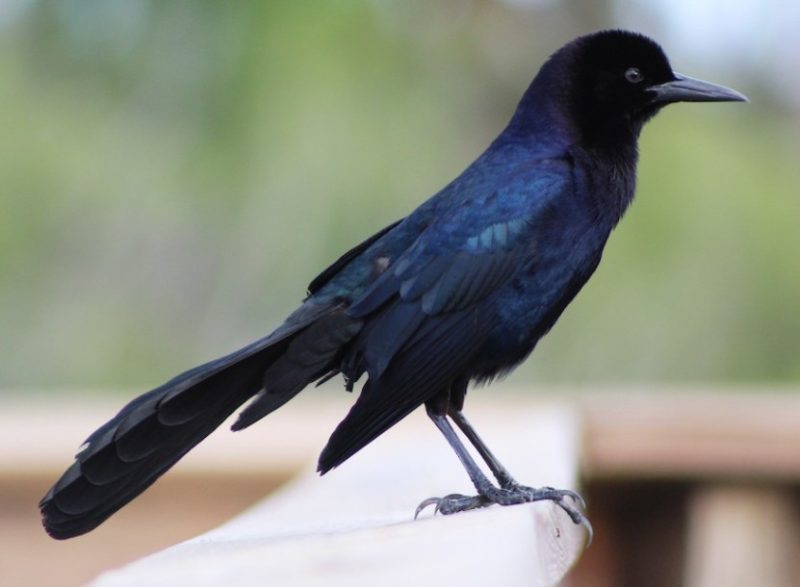
The Boat-tailed Grackle is primarily an eastern and southeastern U.S. species, most common in coastal marshes and tidal wetlands, making it a rare visitor or accidental migrant in Arizona. Males are large and striking with glossy black plumage and long tails that have a distinctive boat-shaped curve, while females are smaller and brownish with lighter underparts. Their loud and varied vocalizations include whistles, squeals, and harsh calls, which are quite different from many other blackbirds.
Adult Boat-tailed Grackles measure around 16 to 18 inches (41 to 46 cm) in length with a wingspan that can reach 18 to 22 inches (46 to 56 cm), making them one of the largest blackbirds in North America. They weigh approximately 6 to 10 ounces (170 to 280 grams). Behaviorally, they are bold and social birds, often found in large, noisy flocks in their typical coastal habitats. They feed opportunistically on a wide variety of foods including insects, small fish, crustaceans, and human refuse.
While the Boat-tailed Grackle is not a regular species in Arizona, there have been occasional sightings, mostly of wandering or migrating individuals. These rare occurrences usually take place in the southern part of the state or near large bodies of water. Birders in Arizona consider any sighting of the Boat-tailed Grackle a special treat due to its rarity and distinctive size and calls. Its primarily eastern distribution means it is more likely to be encountered in coastal states but remains a notable rarity for southwestern bird lists.
Black-headed Grosbeak (Pheucticus melanocephalus)
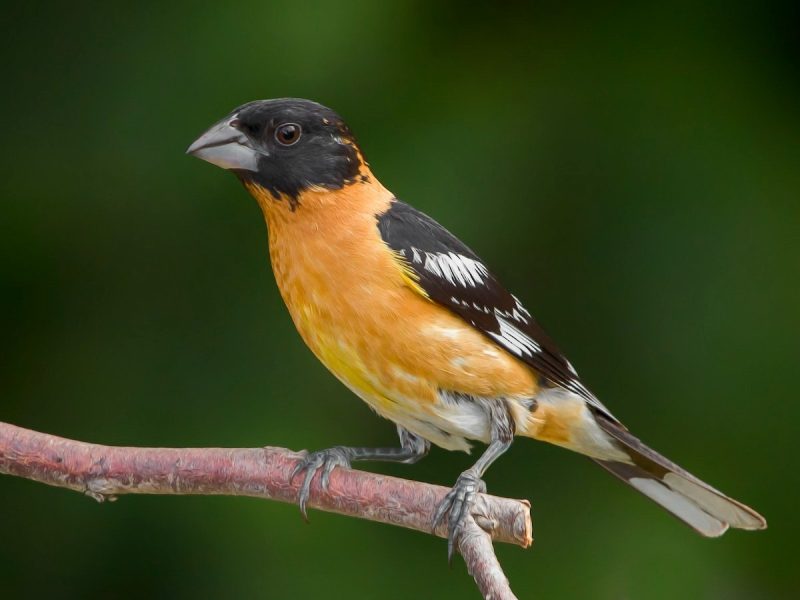
Although not a true blackbird, the Black-headed Grosbeak is often colloquially lumped with blackbirds due to its striking black head and prominent contrasting plumage. Males exhibit a bold combination of a solid black head, bright orange breast, and white wing patches, while females have a more muted yellowish-brown coloration with streaking. Their thick, conical bills are perfect for cracking seeds and eating a wide range of foods. These birds are admired for their beautiful songs and colorful appearance.
Measuring about 7.5 to 8.7 inches (19 to 22 cm) in length, Black-headed Grosbeaks weigh approximately 1.4 to 2.0 ounces (40 to 55 grams). They have a robust body with strong wings adapted for long-distance migration between their breeding grounds in western North America, including Arizona, and wintering areas in Mexico and Central America. Their behavior includes feeding on seeds, berries, insects, and even snails, often foraging high in trees and shrubs or along forest edges.
In Arizona, Black-headed Grosbeaks are most commonly found in montane woodlands, riparian forests, and brushy canyons during the breeding season. They are a welcome sight for bird watchers because of their colorful plumage and pleasant, rich song. Their preference for mixed forest and woodland habitats sets them apart from typical blackbirds that often frequent open fields or wetlands. Although not a blackbird taxonomically, their striking black head and social habits frequently cause them to be grouped informally with blackbirds in popular birding discussions.
Scott’s Oriole (Icterus parisorum)

Scott’s Oriole is a striking bird with a bold combination of black and bright yellow plumage that makes it stand out in the southwestern landscapes of Arizona. Males typically have a glossy black head, back, and tail, contrasted sharply by vibrant yellow underparts and wing patches. Females and juveniles are somewhat duller, showing olive-yellow coloring with less distinct black markings. This species is relatively large for an oriole, and its long tail and slender bill help distinguish it from other icterids in the region.
Adults measure about 8.3 to 9.1 inches (21 to 23 cm) in length and weigh roughly 1.3 to 1.8 ounces (37 to 50 grams). Scott’s Orioles are known for their musical, flute-like songs and sharp calls, often heard in open woodlands and desert scrub habitats. They are primarily insectivorous during the breeding season but also feed on fruits and nectar, which they skillfully extract using their pointed bills. Their behavior includes acrobatic foraging among tree branches and occasional visits to hummingbird feeders.
In Arizona, Scott’s Oriole is most commonly found in riparian woodlands, desert washes, and areas dominated by mesquite and cottonwood trees, primarily in the southern and central parts of the state. They build hanging, woven nests suspended from tree branches, usually well concealed among foliage. Their presence is a welcome sight for bird watchers, especially during spring and summer, when males sing prominently to defend their territories.
Hooded Oriole (Icterus cucullatus)
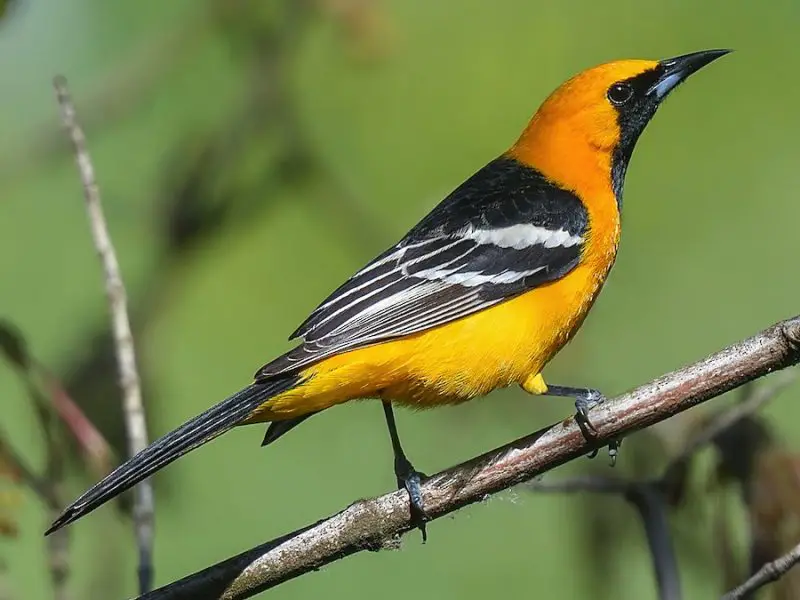
The Hooded Oriole is a brightly colored, slender bird commonly found in the deserts and suburban areas of Arizona. Males exhibit brilliant orange-yellow plumage on the head, chest, and back, with black wings and tail. Females are paler, often olive-yellow with more muted markings, making them less conspicuous. This oriole species is noted for its long, pointed bill and sleek body shape, adapted for gleaning insects and sipping nectar.
Typically measuring 7.5 to 8.7 inches (19 to 22 cm) long and weighing around 1.1 to 1.5 ounces (30 to 43 grams), Hooded Orioles are agile foragers often seen feeding among palm fronds, flowering trees, and shrubs. Their song is a series of rich whistles and rattles, which they use to communicate within dense foliage. Hooded Orioles also enjoy visiting nectar feeders and fruiting trees, playing a role in pollination.
In Arizona, Hooded Orioles are commonly found in desert oases, suburban gardens, and riparian woodlands across much of the southern and central regions. Their nests are distinctive, purse-shaped structures woven from plant fibers and hung from the undersides of palm leaves or tree branches. Their adaptability to human environments makes them one of the more frequently encountered orioles in Arizona’s desert landscapes.
Bullock’s Oriole (Icterus bullockii)
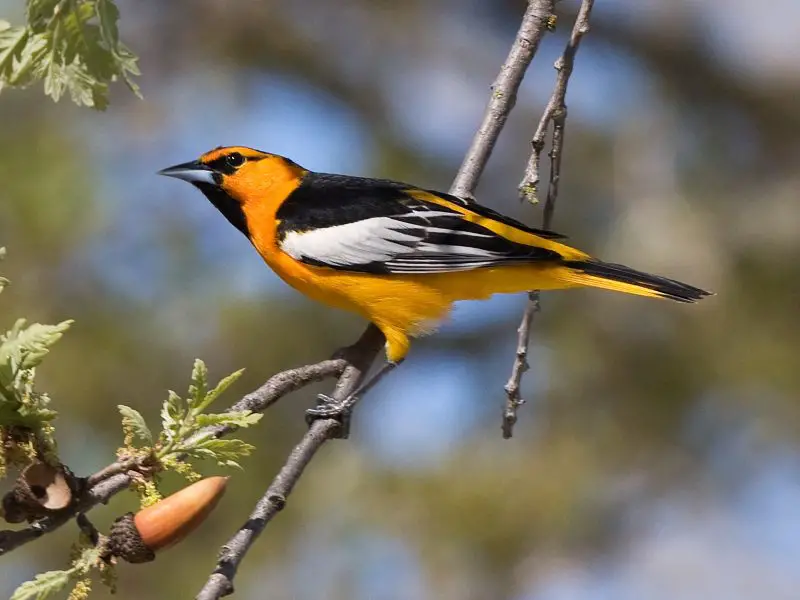
Bullock’s Oriole is a colorful and vocal bird frequently seen across Arizona during the breeding season. Males boast a vivid orange breast and belly, black head and back, and striking white wing bars, while females are paler orange with grayish-brown wings and less bold facial markings. Their thick, pointed bills are perfect for their diet of insects, nectar, and fruit. Bullock’s Orioles are known for their melodious whistles and varied songs, often heard in open woodlands and riparian areas.
Measuring around 7.5 to 8.7 inches (19 to 22 cm) in length and weighing approximately 1.1 to 1.6 ounces (30 to 45 grams), Bullock’s Orioles are medium-sized icterids with a slender build and relatively long tail. They forage actively in tree canopies and shrubs, sometimes hovering briefly to glean insects or sip nectar. Their nesting habits include weaving intricate, hanging pouch nests suspended from the tips of tree branches, often high above the ground for protection.
In Arizona, Bullock’s Orioles are most commonly found in riparian corridors, oak woodlands, and mixed forests, particularly in the northern and central parts of the state during spring and summer. They are migratory and typically spend winters in Mexico and Central America. Their bright coloration and lively song make them a favorite among bird enthusiasts during the breeding season in Arizona.
Altamira Oriole (Icterus gularis)

The Altamira Oriole is a rare but fascinating visitor to the extreme southern regions of Arizona, mostly near the border with Mexico. Males are vivid orange with black faces and throats, while females are generally duller orange with less distinct facial markings. Their size is relatively large for orioles, and they possess a strong, pointed bill adapted for feeding on insects, fruits, and nectar. Their bright colors and bold patterns make them stand out among Arizona’s more common oriole species.
Adults typically measure 8.3 to 9.4 inches (21 to 24 cm) in length and weigh around 1.8 to 2.1 ounces (50 to 60 grams). The Altamira Oriole is known for its rich, flute-like song and a variety of calls used for communication within their territories. They build large, woven hanging nests, often suspended from tall trees or palms, sometimes in small colonies.
In Arizona, sightings of Altamira Orioles are uncommon and considered special events, generally occurring in riparian zones or well-vegetated areas near the U.S.-Mexico border. Their distribution is mostly in northeastern Mexico and along the Gulf Coast, but occasional wandering individuals reach southern Arizona. These rare appearances delight bird watchers eager to spot this colorful oriole outside its typical range.
Audubon’s Oriole (Icterus graduacauda)
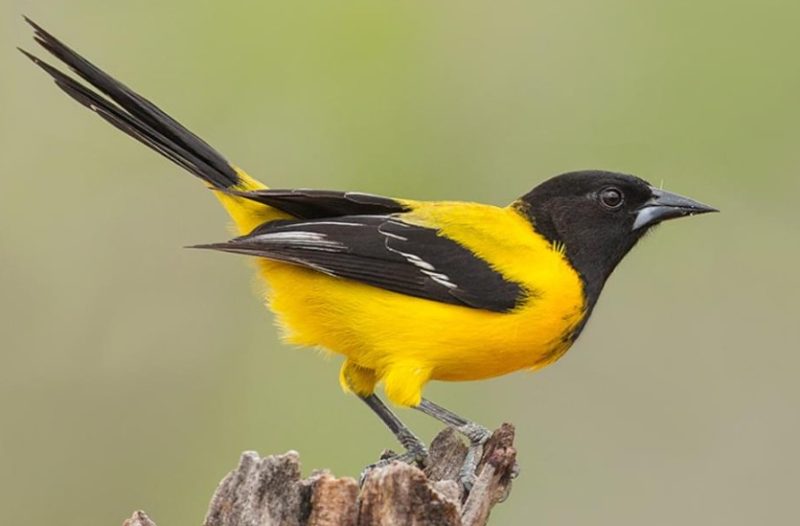
Audubon’s Oriole is an exceptionally rare and elusive species in Arizona, mainly restricted to the southernmost border areas. Males are striking with black heads, backs, and tails contrasted by bright yellow underparts and wing patches, somewhat similar to Scott’s Oriole but with subtle differences in plumage patterns. Females are duller with olive-yellow tones and less distinct markings. Their strong bills and agile flight make them adept at gleaning insects and feeding on nectar and fruit.
This species measures about 8 to 9 inches (20 to 23 cm) in length and weighs around 1.4 to 1.8 ounces (40 to 50 grams). Audubon’s Orioles have a rich, melodious song composed of varied whistles and flutelike notes, often heard from dense woodland habitats. Their nesting involves weaving hanging pouch-like nests in trees or shrubs, where they raise their young concealed from predators.
In Arizona, Audubon’s Oriole is an extraordinary rarity, with only a few documented sightings in the southern border regions. Their main range lies further south in Mexico and Central America. Because of their scarcity in Arizona, birders treasure any opportunity to observe this species, which highlights the state’s role as a crossroads for diverse avifauna between the U.S. and Mexico.
Spot-breasted Oriole (Icterus pectoralis)
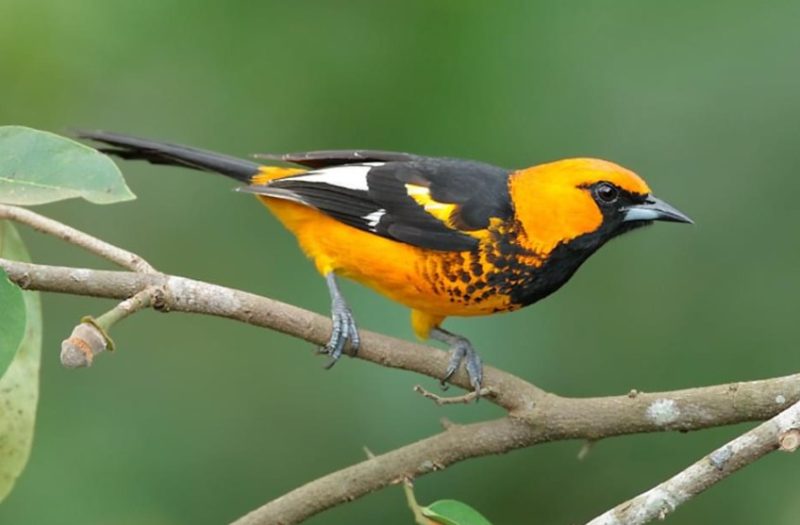
The Spot-breasted Oriole is a rare and elusive bird primarily found in Mexico, with very occasional and extremely rare sightings in southern Arizona near the border. Males display bright yellow-orange plumage with distinctive black spots scattered across the breast, giving the species its name. Females are generally duller, with less prominent spotting and a more olive-yellow tone. Their stout, slightly curved bills are perfect for their diet of insects, fruit, and nectar, enabling versatile feeding strategies in their preferred habitats.
Adults range from about 7.9 to 9 inches (20 to 23 cm) in length and weigh approximately 1.5 to 1.8 ounces (42 to 52 grams). They are known for their rich, melodious songs and whistles, which carry through dense woodlands where they prefer to forage. Spot-breasted Orioles build hanging woven nests suspended from tree branches, often well hidden among thick foliage to avoid predators.
In Arizona, the Spot-breasted Oriole is considered an extreme rarity, with records mostly confined to the extreme southern border near Mexico. Its core range is in northeastern Mexico and parts of Central America. Bird watchers treasure any observation of this species, as it is a special find that highlights the unique biogeography of the Arizona borderlands.
Yellow-billed Cuckoo (Coccyzus americanus)
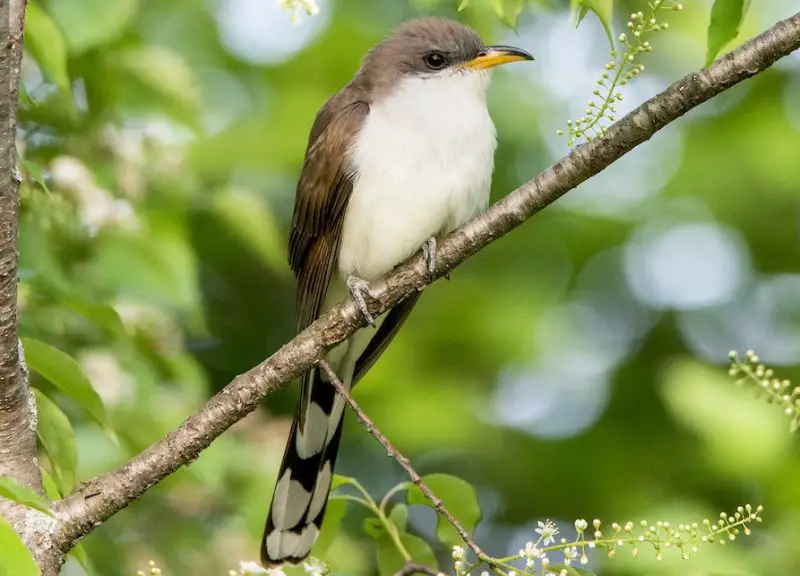
Although not a blackbird, the Yellow-billed Cuckoo is sometimes confused with dark-plumaged blackbirds due to its relatively dark coloration and preference for riparian woodland habitats. This medium-sized bird has a slender body, long tail with white spots underneath, and a distinctive yellow lower mandible, which helps in proper identification. Their plumage is mostly brownish-gray above and white below, with a subtle crest that can be raised during displays.
Yellow-billed Cuckoos measure about 11 to 12 inches (28 to 31 cm) long and weigh around 2.3 to 2.7 ounces (65 to 77 grams). Behaviorally, they are secretive and often heard more than seen, known for their repetitive, hollow-sounding calls. Their diet primarily consists of large caterpillars and insects, which they forage for in dense trees and shrubs. They have a distinctive flight style with slow, deliberate wingbeats.
In Arizona, Yellow-billed Cuckoos are mostly found in riparian corridors and dense thickets during the summer breeding season. Their preference for lush vegetation along streams and rivers can sometimes cause them to be confused with certain blackbirds that inhabit similar environments, but their unique calls and behavior set them apart. They are considered a species of conservation concern due to habitat loss in some areas.
Lesser Goldfinch (Spinus psaltria)
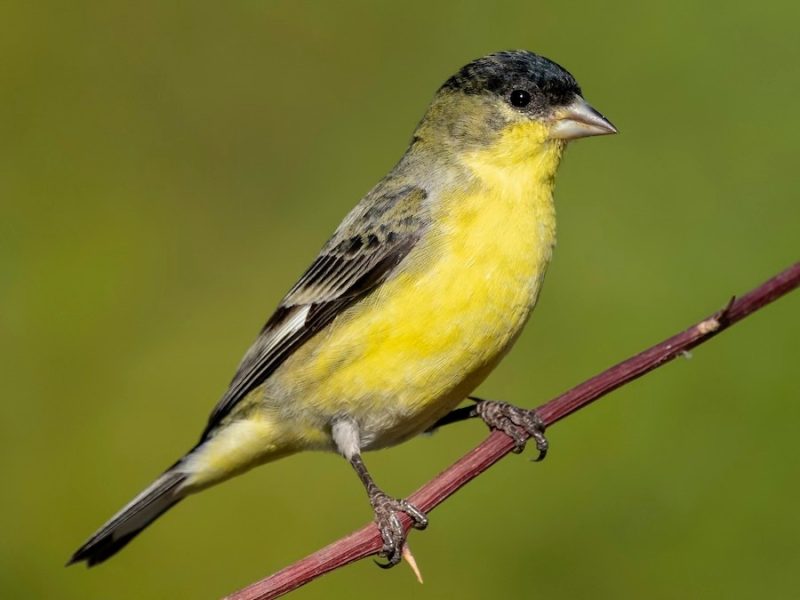
The Lesser Goldfinch is a small, vibrant songbird that, although not a blackbird, is often grouped with blackbirds due to its striking black and yellow coloration and shared habitats. Males show glossy black on the head, back, and wings contrasted with bright yellow underparts, while females tend to be duller with olive and yellow tones. Their small, conical bills are perfectly adapted for seed-eating, especially from thistle and sunflower plants.
Measuring about 4 to 5 inches (10 to 13 cm) in length and weighing around 0.3 to 0.4 ounces (9 to 12 grams), Lesser Goldfinches are agile and active feeders. They often feed in flocks, moving quickly among trees, shrubs, and open fields. Their songs are cheerful and musical, consisting of twittering notes and trills, which contribute to their popularity among backyard bird watchers.
In Arizona, Lesser Goldfinches are common and widespread across deserts, woodlands, and urban gardens throughout the year. Their bright coloration and lively behavior make them easily noticed in mixed-species flocks. Despite not being a blackbird, their frequent association with blackbird habitats and their black-and-yellow appearance often cause casual observers to lump them together.
Phainopepla (Phainopepla nitens)
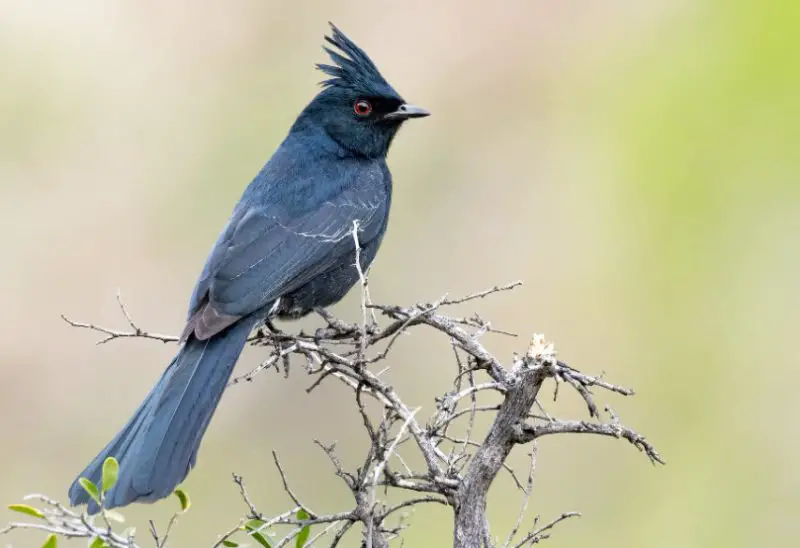
Phainopepla is a unique and elegant bird native to the deserts of the southwestern United States, including Arizona, often regarded as a special kind of blackbird due to its glossy black plumage and membership in the Icteridae family. Males are strikingly glossy black with red eyes, while females are grayish with subtle crest feathers. Known for their distinctive crest and sleek silhouette, Phainopeplas have slender bodies and long tails, making them easily distinguishable.
They measure about 7.5 to 8.3 inches (19 to 21 cm) in length and weigh approximately 1.1 to 1.4 ounces (32 to 40 grams). Behaviorally, Phainopeplas are known for their slow, deliberate wingbeats and frequent hovering as they feed on desert mistletoe berries, which are a crucial part of their diet. They also eat insects, especially during breeding season. Their call is a soft, whistled “wheeer,” quite different from many blackbird calls.
In Arizona’s arid regions, Phainopeplas inhabit desert washes, mesquite thickets, and riparian corridors. Their dependence on mistletoe plants connects them closely to the desert ecosystem, and their presence is an indicator of healthy desert habitats. Their unique behavior and striking appearance make them a favorite for bird watchers interested in the distinctive avifauna of the American Southwest.
Western Meadowlark (Sturnella neglecta)
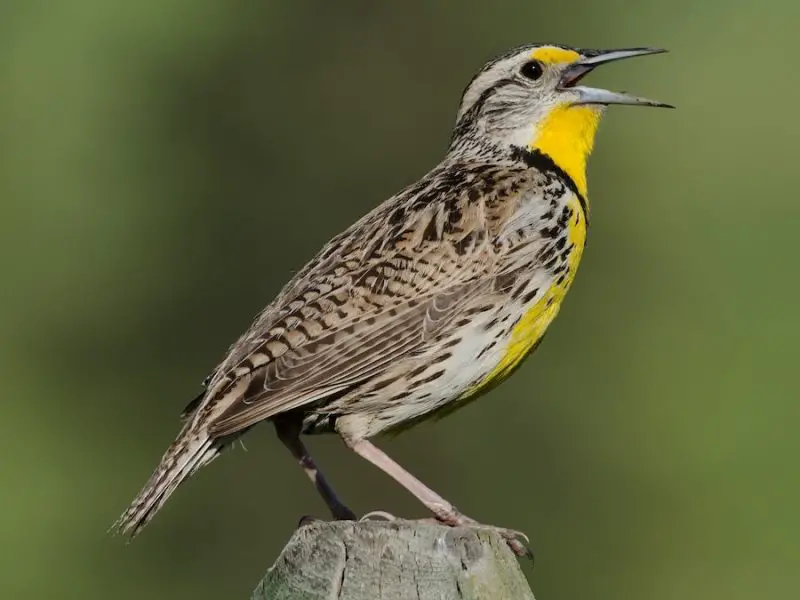
The Western Meadowlark is a large and iconic member of the blackbird family, renowned for its melodious, flute-like song that is often associated with open grasslands and prairies. Males have a bright yellow throat and underparts marked with a distinct black “V” on the chest, while their backs are streaked brown and white for camouflage. Their pointed bill and robust build enable them to forage efficiently on insects and seeds in grassy habitats.
Measuring about 8.3 to 11 inches (21 to 28 cm) long and weighing around 2.6 to 3.5 ounces (75 to 100 grams), Western Meadowlarks are ground foragers that use their strong bills to probe soil and vegetation for food. Their distinctive, complex song carries over long distances and is often heard during the breeding season in open country. They build dome-shaped nests on the ground, concealed by tall grasses.
In Arizona, Western Meadowlarks are commonly found in grasslands, agricultural fields, and open desert plains, especially in the northern and central regions. Their presence is often a sign of healthy open habitats. Bird watchers treasure their melodious song and striking yellow plumage contrasted with the natural landscape.
Eastern Meadowlark (Sturnella magna)

The Eastern Meadowlark is a close relative of the Western Meadowlark but is extremely rare in Arizona, with only a few documented sightings mainly in eastern parts of the state. Similar in size and shape to the Western Meadowlark, it can be distinguished by subtle differences in song and plumage patterns. Males have bright yellow underparts with a black “V” on the chest, but their back feathers are more heavily patterned and their song is distinctly different—more flute-like and less harsh.
Adult Eastern Meadowlarks measure about 8.3 to 10 inches (21 to 25 cm) long and weigh around 3 to 3.5 ounces (85 to 100 grams). They are ground-nesting birds, favoring open fields and meadows where they forage for insects, seeds, and grains. Their shy behavior and preference for dense grass cover make them harder to spot compared to other blackbirds.
In Arizona, sightings of the Eastern Meadowlark are very uncommon and considered noteworthy by bird watchers. Most records come from the eastern desert plains near New Mexico. Their rarity in the state adds to their appeal for birders seeking to document unusual species and better understand range shifts in grassland birds.
Vermilion Flycatcher (Pyrocephalus rubinus)

Although not a blackbird, the Vermilion Flycatcher is often mistaken for one due to its bold, bright red coloration and presence in similar open and riparian habitats in Arizona. Males exhibit brilliant vermilion red plumage with dark brown wings and tail, while females are paler with more muted reddish tones. This small passerine has a slender, pointed bill designed for catching insects in midair, typical of flycatchers.
Adults measure about 5.5 to 6.7 inches (14 to 17 cm) in length and weigh roughly 0.5 to 0.7 ounces (15 to 20 grams). Their behavior includes hawking insects from exposed perches and performing acrobatic aerial sallies. Their sharp, musical calls and distinctive song make them relatively easy to identify. Despite their vivid color, Vermilion Flycatchers blend well into the vibrant desert and riparian landscapes they inhabit.
In Arizona, Vermilion Flycatchers are widespread in lowland deserts, river valleys, and irrigated farmland throughout the year. Their presence is often welcomed as a splash of color and a lively insect hunter amid the arid environment. Their occasional confusion with blackbirds is understandable but they belong to a completely different bird family.
FAQs About Blackbirds in Arizona
What are blackbirds?
Blackbirds are a group of medium-sized birds belonging primarily to the family Icteridae, which includes species such as grackles, orioles, cowbirds, and meadowlarks. They are known for their often glossy black or dark plumage, but some species have bright color accents like yellow, orange, or red. Blackbirds are found mostly in the Americas and are highly adaptable to various habitats.
What do blackbirds eat?
Blackbirds have diverse diets that vary by species and season. Most are omnivorous, feeding on insects, seeds, fruits, and sometimes small amphibians or other invertebrates. For example, Red-winged Blackbirds eat mostly insects and seeds, while Cowbirds often feed on insects stirred up by grazing mammals. Some blackbirds also consume human food scraps in urban areas.
Where do blackbirds live?
Blackbirds occupy a wide range of habitats including wetlands, grasslands, agricultural fields, forests, deserts, and urban environments. In Arizona, you can find different species in marshes, riparian woodlands, desert scrub, and suburban gardens. Their ability to adapt to human-altered landscapes has helped many species thrive across the continent.
How can I identify different blackbird species?
Identification often relies on size, coloration, vocalizations, and habitat preferences. Males are usually more colorful or glossy, while females tend to be duller. Key features include distinctive patches (like the red epaulets of Red-winged Blackbirds), eye color, tail shape, and calls. Birdwatchers use a combination of visual clues and songs to differentiate species.
Do blackbirds migrate?
Many blackbird species undertake seasonal migrations. For instance, the Rusty Blackbird migrates from northern breeding grounds to southern wintering areas. Others, like the Great-tailed Grackle and Brewer’s Blackbird, may be year-round residents in parts of Arizona but move locally depending on food availability and weather conditions.
Why do blackbirds sometimes form large flocks?
Blackbirds often gather in large flocks, especially outside the breeding season, for increased foraging efficiency and protection against predators. These flocks can include thousands of individuals, sometimes mixing multiple species. Large communal roosts also help them conserve warmth and share information about food sources.
Are blackbirds harmful to other bird species?
Some blackbirds, particularly Cowbirds, are brood parasites—they lay their eggs in the nests of other birds, which can reduce the reproductive success of host species. This behavior has ecological impacts, but blackbirds generally are important parts of their ecosystems, contributing to insect control and seed dispersal.
How can I attract blackbirds to my yard?
Planting native shrubs and trees that provide food and shelter can attract blackbirds. Providing water sources like birdbaths and offering feeders with seeds or suet can encourage visits. Avoiding pesticides will increase insect availability, an important food source for many blackbirds, especially during breeding season.

